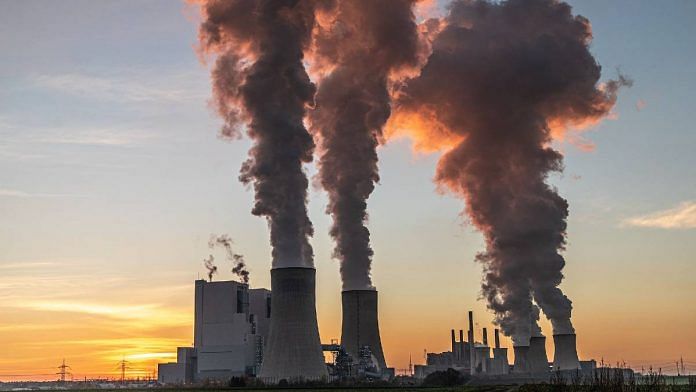New Delhi: India is among 13 of 30 countries responsible for almost 90 percent of carbon pollution in the world and could face some of the most severe impacts of climate change and extreme heat, a new report by global risk intelligence company Verisk Maplecroft found.
Data from Verisk Maplecroft’s Climate Hazard Index — part of the company’s risk dataset — shows that top emitters, including Brazil, India, Indonesia, Malaysia, Saudi Arabia, Thailand, Vietnam, and the UAE, will be among the most exposed countries globally for climate impacts if emissions policies stay as they are. The report, released Thursday, also found that the two largest emitters — the US and China — should, for the most part, escape the very worst outcomes.
“The United Nations Framework Convention on Climate Change (UNFCCC) COP process might give the impression that countries are either drivers or sufferers of climate change. But our analysis reveals a clear overlap between those perpetuating global warming and the societies and economies set to face the harshest consequences,” it read.
The data identifies the carbon-heavy markets that will need to undertake extreme adaptation to protect their populations, societies, and economies, particularly if the mean surface temperatures breach the globally recognised 2 degrees Celsius threshold.
The report notes that major emitters will face high to very high levels of risk by 2080 across two or three of the emission scenarios assessed by the company’s climate hazard index.
The index measures exposure to 16 chronic and acute climate risks — including extreme temperatures, drought, and severe storms — across seven time horizons. For most of these high-emitter countries, the risks are significant even under the best-case climate scenario.
“In terms of physical risk, four countries – Malaysia, Iraq, Mexico, and Australia – stay above the critical ‘high’ risk threshold in the most optimistic scenario. But all four suffer much poorer outcomes under either middle-of-the-road or worst-case scenarios,” the report read.
The report goes on to say that by pairing three physical risk scenarios with three transition risk ones for 2050, data shows how policy decisions in the coming years will lock in physical risks later in the century.
This would be crucial for Egypt, India, Indonesia, Pakistan, Saudi Arabia, Thailand, Vietnam, and Brazil, which will likely experience some of the most significant impacts of climate change under all three scenarios, including the most optimistic pathway.
The report said this should provide a clear incentive for these countries to cut emissions as soon as possible.
“A swift and managed energy transition could provide significant physical risk gains compared to a delayed or disorderly transition — where emissions-cutting policy measures could be imposed with little warning,” it read.
Verisk Maplecroft releases its Climate Hazard Index every year. The reports are quoted and discussed at international climate change meetings.
Also Read: Carbon trading to climate fund negotiations — what to expect from COP28 in Dubai
Intense heat waves in the future
Another alarming warning in the report is the increased heat frequency in these countries. “More frequent and intense extreme weather events will be damaging, but heat itself is likely to be the single biggest threat to economic activity, and indeed human life in these countries,” the report read.
With the increase in mean temperatures, Verisk Maplecroft’s extreme temperature index showed that the 13 most climate-exposed major emitters are set to experience a significant rise in episodes of extreme heat.
The findings warn that extreme heat will act as a “pervasive drag on many types of economic activity.”
“This is particularly true when it combines with intense humidity in tropical regions or radiant heat in deserts. These conditions can generate physiological heat stress severe enough to be dangerous for those working in sectors involving outdoor or unventilated work, such as agriculture and construction,” the report read.
(Edited by Uttara Ramaswamy)



